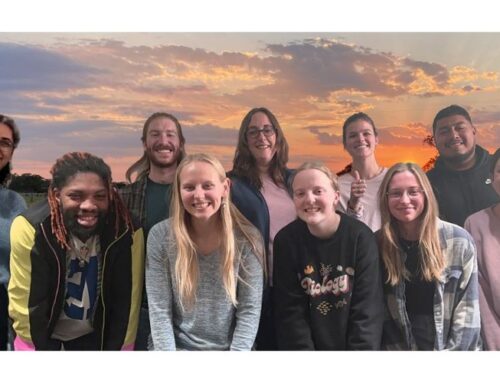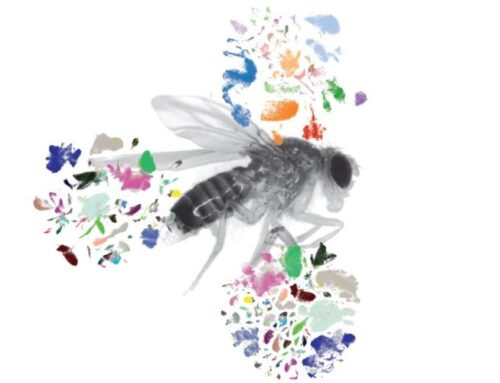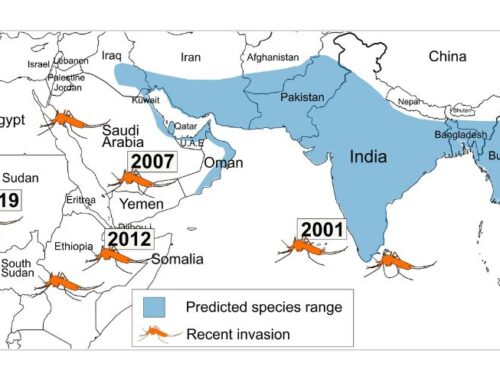Former Student Success: Mary Janecka

Mary Janecka is a former graduate student in the Charles Criscione lab at Texas A&M Biology. She received her Ph.D. from TAMU in 2019 with her dissertation work on the delisted concho water snake that is endemic to the Colorado River drainage in Texas. Dr. Janecka is also a recipient of a NSF Postdoctoral Fellowship to work on the landscape genetics of monogene parasites in Trinidad guppies.
“Mary is an outstanding independent researcher and one of the best field biologists that I have ever come across. During her graduate work she sought out her study system and got funding for it. Her drive, hard work, and creative mind is what made her successful and why she has continued to have success as exemplified with her current NSF Postdoctoral Fellowship.”
What sparked your interest in biology?
Spiders sparked my interest in biology when I was a toddler in El Paso. Some of my first memories from childhood are catching black widows and the occasional tarantula with my dad and keeping them in jars. My interest grew from there and I was lucky that my parents encouraged me keep doing what I loved.
What is your educational background?
I am from Lampasas, Texas. As a kid, I swam and caught snakes in some of the same spots in the Colorado River where I later caught snakes during my PhD. I went to Emporia State University for my BS. I did my MS at University of Texas-Pan American (now University of Texas Rio Grande Valley) where my research focused on habitat use and host specificity of the Bronzed Cowbird ( a brood parasite).
What is your current position and project?
I am an NSF Postdoctoral research fellow at the University of Pittsburgh. My research applies landscape genetics tools to understand the fundamental, yet poorly understood processes that shape parasite ecology and evolution in complex river networks.
 When were you at TAMU and what were you working on here?
When were you at TAMU and what were you working on here?
I graduated from TAMU in 2019. While there I focused on two main research projects: 1.) The post-delisting demographic and genetic monitoring of the Concho water snake. This snake has one of the smallest ranges of snake in the US and is found only in the Colorado and Concho Rivers in west Texas. and 2. ) I studied the effects of host specificity and river architecture on Renifer aniarum and R. ancistrodontis, trematode parasites that infect the mouths of water snake and cotton mouths. In order to do these projects, I caught water snakes and cottonmouths in on the Colorado and Concho Rivers (west Texas) and in the seasonally flooded hardwood forest bottomlands in east Texas. I collected small tissue samples from the snakes, implanted them with a PIT tag, and removed the parasites from their mouths. I then released the snakes. I developed new molecular markers for the two parasite species and for the Concho water snake and used population genetics tools to address my questions of interest.
 What is your most recent paper about?
What is your most recent paper about?
My most recent paper is about the conservation genetics of the Concho water snake. I integrated landscape genetics into the post-delisting monitoring of the species to determine that concho water snakes currently have small, isolated subpopulations along the Colorado River and in the O.H. Ivie reservoir. I also found evidence of recent population bottlenecks (declines). Our results are a much-needed baseline for the status of the species at the time of de-listing but also raise concern for the future conservation of this unique Texas species.
What is your NSF Postdoc Fellowship project?
Host parasite coevolutionary interactions occur within complex geographic mosaics that can generate hot and cold spots of adaptation across the landscape. Variation in the effects of landscape connectivity between host and parasite can fundamentally alter the outcomes of these coevolutionary processes. I integrate fine-scale field sampling of guppies and the monogenean parasites Gyrodactylus turnbulli and G. bullatarudis with population genomic data to investigate the processes that shape host-parasite coevolutionary dynamics in complex river ecosystems.
 What is your favorite aspect of working on your project?
What is your favorite aspect of working on your project?
Field work is always my favorite part of research! Hiking the mountains, rivers, and waterfalls to collect guppies (and herps) in Trinidad is without a doubt my favorite part.
What is a favorite memory you have of your time at TAMU?
I had my son during my third year of grad school. My favorite memories from TAMU are playing with him on campus when he was a baby.
Congratulations again to Dr. Janecka on her NSF Postdoctoral Fellowship!

